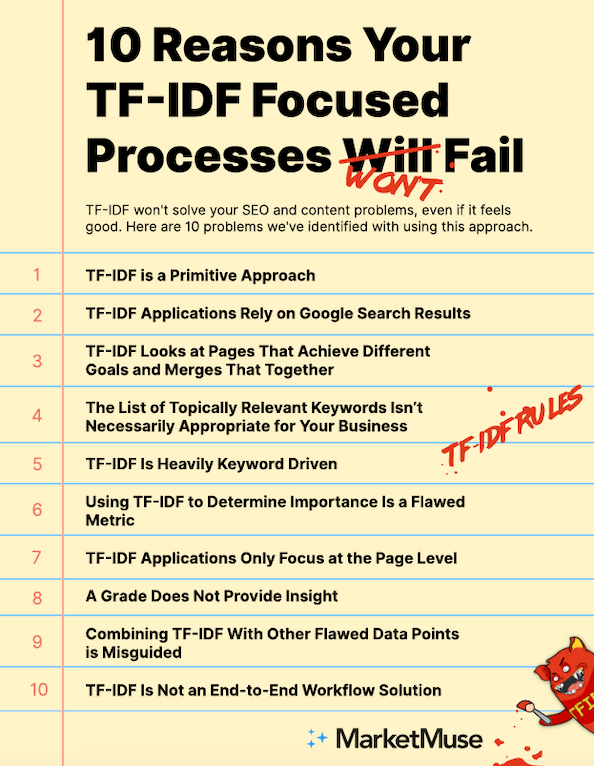Uncover the mystery behind td idf and how it revolutionizes the world of search engine optimization and content creation.

Image courtesy of via DALL-E 3
Table of Contents
Introduction to ‘tf idf’
Have you ever wondered how computers understand the words that we type or read on the internet? Well, one important tool that helps them make sense of all that text is called ‘tf idf’. Let’s break down what ‘tf idf’ means and why it’s so important when it comes to understanding information and text.
What ‘tf’ Means
First things first, let’s talk about ‘term frequency’ or ‘tf’. This measures how often a specific word appears in a document. For example, if you have a document about cats, the term frequency of the word “cat” would be high because it appears many times in that document.
What ‘idf’ Means
Now, let’s move on to ‘inverse document frequency’ or ‘idf’. This part of ‘tf idf’ helps in understanding the importance of a word across multiple documents. Words that are common in many documents, like “the” or “and,” have a low ‘idf’ score because they are not very unique or important.
By combining ‘term frequency’ and ‘inverse document frequency’, we can calculate the ‘tf idf’ score, which gives us a way to determine how significant and relevant a word is in a specific piece of text. Pretty cool, right?
Why tf idf is Important
When we read a book or an article, not all words carry the same weight. Some words are more essential in conveying the meaning of the text. ‘tf idf’ helps us identify these crucial words by evaluating how often they appear and how significant they are in the context of the entire document.
Improving Search Engines
Search engines like Google use ‘tf idf’ to rank search results and provide us with the most relevant information. By analyzing the importance of words in a document compared to their frequency across different documents, search engines can deliver more accurate and useful results to users.
How tf idf Works
When we talk about “tf” in tf idf, we are referring to “term frequency.” Term frequency measures how often a word appears in a document. To calculate the term frequency of a word, you count how many times it appears in a document. For example, if the word “apple” appears 5 times in a document that contains a total of 100 words, the term frequency of “apple” would be 5/100 = 0.05.

Image courtesy of blog.marketmuse.com via Google Images
Calculating ‘idf’
Now, let’s move on to the “idf” part of tf idf, which stands for “inverse document frequency.” Inverse document frequency assesses the importance of a word across multiple documents. To calculate the inverse document frequency of a word, you first find the total number of documents, then determine how many of those documents contain the word you’re interested in. Finally, you divide the total number of documents by the number of documents containing the word and take the logarithm of that value. The formula for inverse document frequency is IDF(w) = log(N/df), where N is the total number of documents and df is the number of documents containing the word.
Combining ‘tf’ and ‘idf’
After calculating the individual values for term frequency and inverse document frequency, we combine them to obtain the tf idf score. The formula for tf idf is TFIDF(w, d) = TF(w, d) * IDF(w), where TF(w, d) is the term frequency of word w in document d, and IDF(w) is the inverse document frequency of word w across all documents.
Examples of tf idf in Action
Let’s imagine you have a short paragraph that reads: “The quick brown fox jumps over the lazy dog.” Now, we want to analyze this text using tf idf to see which words are the most important.
First, we calculate the term frequency (tf) for each word in the text. This tells us how often each word appears. In this case, “the” appears twice, “quick,” “brown,” “fox,” “jumps,” “over,” “lazy,” and “dog” each appear once.
Next, we calculate the inverse document frequency (idf), which measures how important each word is across multiple documents. Common words like “the” have low idf scores, while rarer words like “fox” have higher idf scores.
By combining the tf and idf values for each word, we can determine the overall tf idf score. This score helps us identify which words are the most significant in the text. In this example, “fox” would likely have a higher tf idf score compared to “the” or “lazy,” indicating its importance in the document.
Example 2: Multiple Documents
Now, let’s consider a scenario where we have several documents instead of just one. Each document contains different sets of words, and we want to find the most important words across all documents using tf idf.
By analyzing the term frequency and inverse document frequency for each word in all the documents, we can calculate the tf idf scores. This helps us identify the words that are significant not just within a single document, but across multiple documents.
For example, if the word “science” appears frequently in most documents but is rare in others, it would likely have a high tf idf score, indicating its importance across the entire collection of texts.
Using tf idf in Everyday Life
Have you ever struggled with understanding a tricky assignment or textbook? Well, tf idf can come to the rescue! By using tf idf, you can identify the most important words in a passage, making it easier to grasp the main ideas. This can be incredibly helpful when studying for tests or working on essays.

Image courtesy of blog.marketmuse.com via Google Images
Improving Writing
Writers, whether they’re crafting stories, articles, or reports, can also benefit from tf idf. By analyzing the frequency and importance of words in their writing, they can enhance the clarity and impact of their work. Writers can ensure that key concepts are effectively communicated and that their message resonates with readers.
Tools and Software for tf idf
When it comes to calculating tf idf values for text analysis, there are several tools and software available that can automate the process and make it more efficient. These tools can be incredibly helpful in computing the intricate calculations required for tf idf scores. Let’s explore some of the common options:
Online Calculators
One of the easiest ways to calculate tf idf scores is by using online calculators. These tools are usually free and user-friendly, making it simple for anyone to input their text data and get the tf idf values calculated automatically. Online calculators save time and effort, especially for those who are new to text analysis and tf idf calculations.
Advanced Software
For more extensive text analysis projects, advanced software tools may be necessary. Professional text analysis software like Python libraries such as scikit-learn or NLTK can efficiently compute tf idf scores on large datasets. These tools offer more detailed analysis capabilities and customization options for users with specific needs.
Limitations of tf idf
While ‘tf idf’ is a powerful tool for text analysis, it does come with some limitations. One common issue is that ‘tf idf’ does not take into account the meaning or context of words in a document. It only focuses on the frequency of words and their importance across documents. This means that words with high ‘tf idf’ scores may not always be the most relevant or meaningful in a specific context.

Image courtesy of blog.marketmuse.com via Google Images
Alternative Methods
To overcome the limitations of ‘tf idf’, researchers and data scientists have developed alternative text analysis methods. One popular approach is using word embeddings, such as Word2Vec or GloVe, which represent words in a continuous vector space based on their semantic relationships. These methods capture the meaning of words and their context, providing more nuanced insights into text data. Another alternative is topic modeling techniques like Latent Dirichlet Allocation (LDA), which can uncover hidden themes and topics within a corpus of text.
Future of tf idf
As technology continues to advance, new trends in text analysis are emerging, shaping the future of tf idf. One of the key trends is the integration of artificial intelligence and machine learning algorithms to enhance the accuracy and efficiency of tf idf calculations. These technologies can analyze vast amounts of data to identify patterns and extract meaningful insights, improving the overall text analysis process.
Technological Advancements
With the rapid development of technology, the future of tf idf is expected to witness significant technological advancements. There is a growing demand for user-friendly and automated tools that can seamlessly calculate tf idf scores, making text analysis more accessible to a wider audience. Additionally, the integration of natural language processing techniques into tf idf algorithms can further enhance the understanding of textual data.
Summary
In this article, we delved into the essential concept of tf idf, which stands for term frequency-inverse document frequency. We explored how this formula is crucial in helping us understand text and information better.

Image courtesy of blog.veles.rs via Google Images
Key Points
We covered the significance of term frequency (tf) in measuring how often a word appears within a document and explained the importance of inverse document frequency (idf) in weighing the relevance of a word across various documents.
Understanding the tf idf score is vital as it helps us identify important words in a text and enhances the functioning of search engines in retrieving relevant information.
Recap
We detailed the mechanics behind the tf idf calculation process, from determining tf by assessing term frequency to finding idf by gauging the inverse document frequency. By combining these two values, we were able to obtain the overall tf idf score.
Moreover, we illustrated the practical application of tf idf in text analysis with clear examples ranging from analyzing a simple text passage to examining multiple documents.
Importance
Finally, we discussed how tf idf can be used in everyday life, such as aiding in school assignments and improving writing skills. We also introduced various tools and software that automate the computation of tf idf, making the process more efficient.
By grasping the fundamentals of tf idf and its wide-ranging applications, we gain a better understanding of text analysis and information retrieval, paving the way for improved comprehension and efficiency in various tasks.
Frequently Asked Questions (FAQs)
What is ‘tf idf’?
‘tf idf’ stands for term frequency-inverse document frequency. It is a numerical statistic that reflects how important a word is to a document in a collection or corpus. The ‘tf’ part measures how often a word appears in a document, while the ‘idf’ part measures how significant the word is across multiple documents.
How is ‘tf idf’ calculated?
The calculation of ‘tf idf’ involves two main steps. First, we calculate the term frequency (tf) by counting how many times a word appears in a document and dividing it by the total number of words in the document. Next, we determine the inverse document frequency (idf) by dividing the total number of documents by the number of documents containing the word, then taking the logarithm of that ratio. Finally, we multiply the tf and idf values to get the ‘tf idf’ score for each word.
Where is ‘tf idf’ used?
‘tf idf’ is widely used in various applications such as text mining, information retrieval, and search engines. It helps in identifying important words in a document, improving search engine results, assisting in text analysis, and even enhancing writing by prioritizing key terms.







